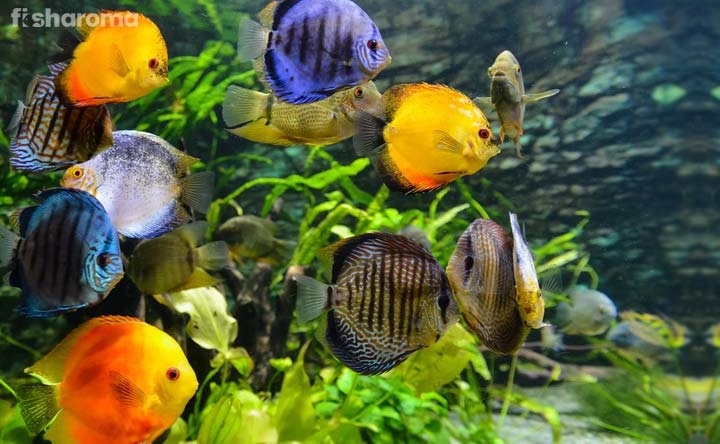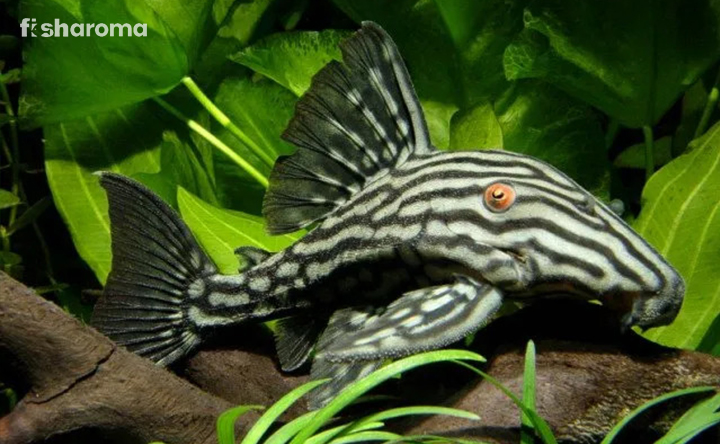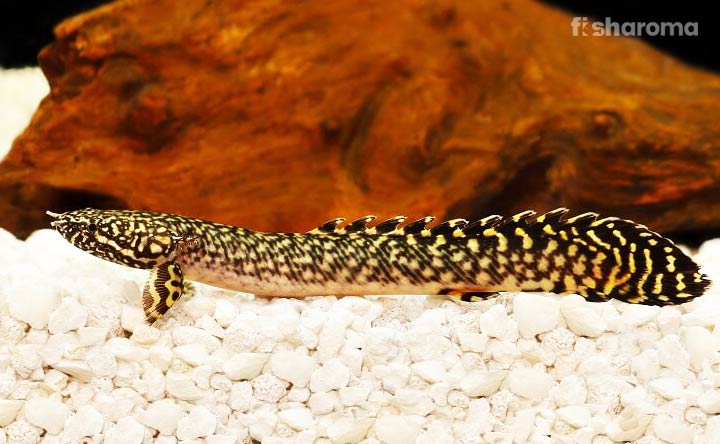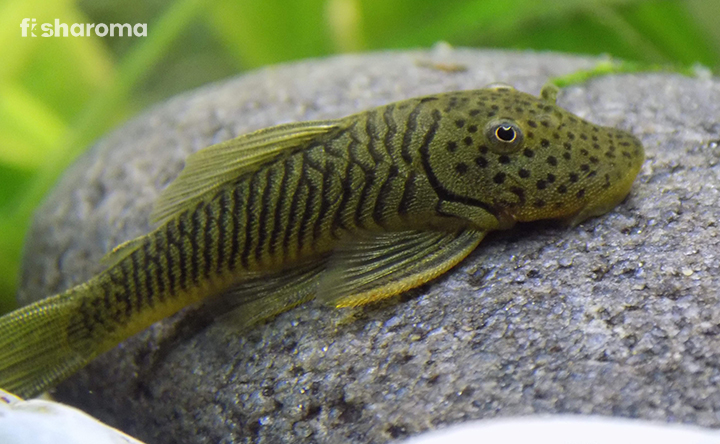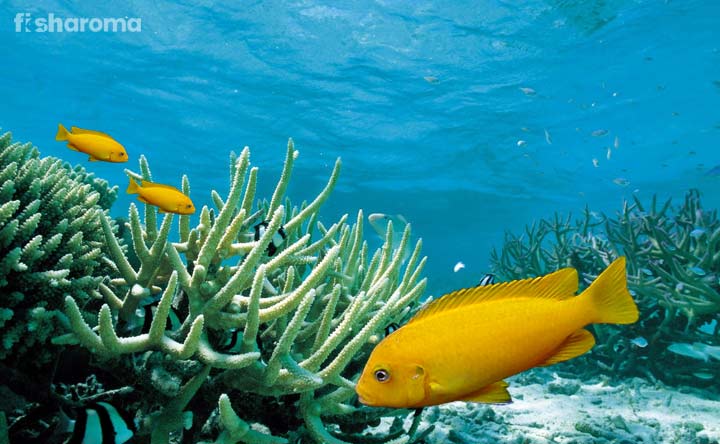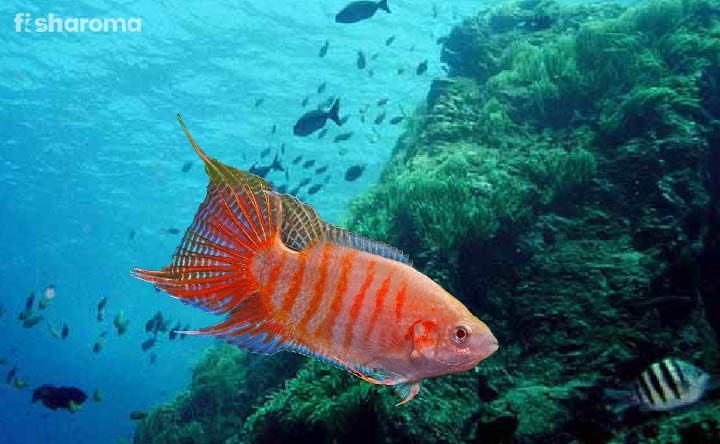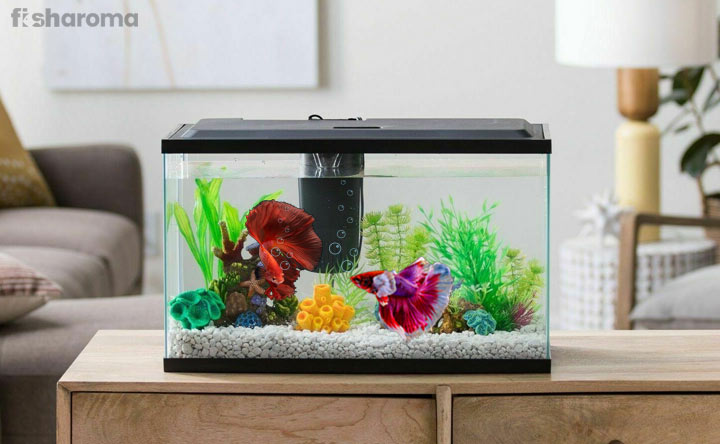African Butterfly Fish: A Thorough Care Guide to this Predatory Insectivorous
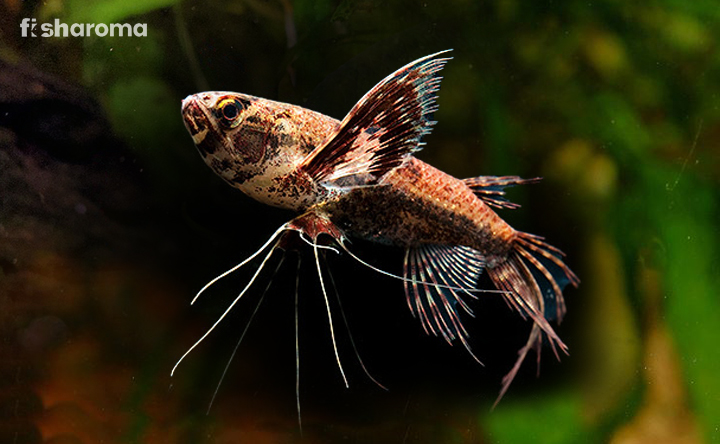
- Origin & Habitat of African Butterfly Fish
- Appearance of African Butterfly Fish
- Behaviour of African Butterfly Fish
- Lifespan of African Butterfly Fish
- Diet of African Butterfly Fish
- Tank Requirements for African Butterfly Fish
- Water Types for African Butterfly Fish
- Compatibility of African Butterfly Fish
- Breeding of African Butterfly Fish
- Diseases and Treatment of African Butterfly Fish
- Summary
Have you ever seen a full-grown fish that resembles a butterfly? Yes, that is what makes everyone wonder how will African Butterfly Fish look! What can be the possible behaviour and required water parameters of this fish?
With a somehow weird yet uncommon look, African Butterfly Fish is an extremely popular pet fish, though not commonly seen. If you are planning to keep this amazing and unique creation of nature, you need to follow the care guide that we are providing you with. You will find it very feasible to have knowledge of tank requirements, their water parameters, the diet and the breeding procedure.
Key Specifications of African Butterfly Fish
It is always better to have a quick look at the small details of the fishes. This sneak peek will surely help you to gather an overall knowledge of the fish.
| Scientific Name | Pantodon Buchholz |
| Origin | West and Central Africa, widely spread |
| Lifespan | 5-6 years |
| Colours | Greenish or brown with dark markings on fins |
| Temperament | Semi-aggressive |
| Size | 4-6 inches |
| Diet | Carnivorous |
| Family | Pantodontidae |
| Compatibility | larger fishes |
| Tank Size | 20-40 Gallons |
| Care Level | Moderate |
Overview
The Freshwater Butterfly fish dwells in the freshwater as is evident from their name. They look more or less same as a butterfly when observed from above the waters. Moreover, they have a pair of disguised wings that make them resemble a butterfly.
Scientifically known as Pantodon Buchholz, these fishes are mainly suitable for experienced aquarists. They demand accurately measured and well-maintained water parameters, which is why they are considered to be fussy. However, we are not at all discouraging any newbie fish keeper. You all can certainly pet this fish, provided you follow the care guide to get intricate details of them.
Origin and Habitat of African Butterfly Fish
Native to the widespread regions of Central and West Africa, these African Butterfly fishes are actually endemic to these places. Their range of origin is not classified in detail and they seem to be very common in Congo Basins and Niger Rivers. You can find them in the shallow regions of Nigeria, Zaire and Cameroon.
The natural habitat of the fish is filled with plants, woods and riverbanks consisting of inclined slopes. They, generally are least concerned about the depth of the water and they are happy to dwell in shallow water bodies.
Appearance of African Butterfly Fish
These fishes are stunningly beautiful and attract the fish keepers with their manageable nature. They have an amazing artistic pattern and have been entirely modified through breeding to get adjust to the present days’ environment and natural situation. As we speak of their appearance, we get to know they have a pair of eyes in the front part of their body, facing upward. This feature enables them to see anything from the front.
With a flattened body, their mouths also get projected forward to hunt on any small food without any hassle. They prefer to stay at the upper portion of the water, so that their breathing is maintained easily (they possess a swim bladder). These fishes can only be differentiated by looking at their anal fins, which is straight for females while in males, one ray is much longer than others.
They have beautifully designed fins on tergal surface and at the position of excretion, these are mostly identical. However, these fins get larger than other fins at the end of the body part. They have wings (actually the pectoral fins look so when viewed from the water surface)! And these wings are evenly spaced on either side of the body and widely spread. There are dark lines on every single wing and all the branches can be seen through. They have the caudal fin, which is larger and amazingly shaped ventral fins that resemble thin barbels. These help them to sense any danger below the water.
Colour
Their back portion is greenish or light brown in colour. Sometimes the brown section might be grey and there are small dots to cover light coloured portions of the body. These dots also increase the radiance of the body. However, based on the specimens and tank conditions, their primary colour might differ.
Size
The fishes’ size varies from 4-6 inches. They are somehow not that larger than they look.
Behaviour of African Butterfly Fish
Keeping these fishes will surely add ornaments to your tank, as they simply lay down and enjoy their residence. They float on the surface and tend to do nothing at all. Completely staying in rest helps them to prey on insects and live foods. As there is no movement, the insects don’t generally understand the danger they are facing.
These fishes are very active swimmers and they dart away to eat the target, once they get to scarf that down. They are skilled jumpers and in no time, your open aquarium can be a death trap for them. They will jump out and face an untimely death.
As far their temperament is considered, they are semi-aggressive and can potentially be aggressive when they find any small fish nearby. This is, though not aggressiveness but a natural predatory habit. Otherwise, they are just peaceful.
Lifespan of African Butterfly Fish
These fishes live for 5-6 years in their natural habitat and even in captive conditions. However, they need a proper tank condition along with enough diet. However, an excellent gene from an extraordinary breeder will exceed their normal lifespan.
Diet of African Butterfly Fish
These fishes are carnivorous and hence, prefer to thrive on live food mainly. The African Butterfly fishes prefer to lay on the upper surface of the water and hunt on the insects, a phenomenon they prefer even in captive conditions. They like to patrol on the upper surface for food.
They need meaty protein and crave for Crickets. This is the favourite food they can live their whole life on. However, you are free to provide them with other insects and small feeder fishes. They have a proper feeding time, which is generally 2-4 times a day. This method is also mimicking their natural feeding requirement and it furnishes extra energy in them. The diet of the African Butterfly fishes includes the following:
- Spiders
- Armetia
- Mosquito Larvae
- Mealworms
- Bloodworms
- Worms
- Brine Shrimp
You can feed them flakes and pellets, however, cannot rely on that completely as you do for your other pets. Least, you must not overfeed them!
Tank Requirements for African Butterfly Fish
Tank requirement is one of the most important factors that needs to be taken care of properly. It is important to keep in mind that these fancy fishes cannot dwell in a bowl and need a mimicry of their natural habitat.
Tank Size
These fishes need ample space to swim gracefully and this free movement is possible only if they are provided with enough space. The African Butterfly fishes prefer to stay on the upper surface for which a long tank is required than a tall one. They are least bothered with the depth of the water, which is why they can survive in shallow water. Provide them with a 20-40 gallon tank to actively perform their swimming techniques, especially when they rush towards food.
Tank Lid
It is of grave importance that you use a covered tank. This is because these little critters are super skilled jumpers. They use their tail fins to jump out. Moreover, they tend to get surprised by any unusual happening, which might cause them to jump out of the water. A tank with a tight hood will serve the best.
Substrates
The substrate is not much important though, as they don’t explore the bottom as such. However, it is always advisable to keep a dark substrate. Even if they visit the bottom for a very short time, still they prefer dark colour. Do not use any coloured pebble or light coloured sand.
Filter
Keeping a filter for proper filtration is a mandate. It helps to keep the water clean and with a powerful filter, ammonia and nitrates will be removed. African Butterfly fishes cannot tolerate any hike in the ammonia level. However, they don’t prefer current in the water, so try to keep the movement least. It is better if you put the filter at the bottom on substrates. This will not create water movement on the upper surface.
Ornaments
These fishes prefer to dwell in the water where there is the presence of rocks and woods. You can keep bogs, driftwood and small wooden structures in the tank. As they don’t get to the bottom much, you can surely use the place for decoration. Put a castle or a yellow submarine to enhance the beauty of the tank.
Presence of Flora
African Butterfly fish love to swim within heavily vegetated areas, for which they mostly prefer to thrive in the riverbanks where there is the presence of many plants. It is very important that you imitate the same for their captive condition. You need to create a natural environment by using the best aquarium plants. They prefer shade, which is why tall plants along with some floating leaves are recommended for their tank. These plants must grow on the surface of the water.
For essentially making their tank setup, you can use Anubias and Bolbitis. They are of shy nature and use these plants for hiding purposes.
Lighting
These fishes need soft or subdued lighting. They are crepuscular, which says they remain inactive when the sun shines brightly. In simpler words, you can say they are kind of nocturnal. Even in strong aquarium light, they remain dormant for a longer period of time. In fact, these fishes are fed 4 times a day just to get a look at their activity, or else they remain inactive during the day.
Cleaning Method
Keeping the tank clean is of pivotal importance and this needs to be done within a certain time period. The stones, substrates and other ornaments must be cleaned frequently so that they don’t gather algae. In order to clean the tank, you must put the tank under slow-flowing water and use a soft cloth to rinse the walls smoothly.
Water Types for African Butterfly Fish
As we speak of their water requirement, we would like to discuss the measured parameters required for their growth and sustenance.
Temperature
The temperature of the water must be somehow light warm like tropical environment and needs to be within 22-30 Degrees Celsius.
pH Level
The pH Level must be maintained within 6.4-6.8. They prefer slightly acidic water.
Hardness
The African Butterfly fishes cannot tolerate hard water and find themselves best in soft water. The range of general hardness is 8-12 dGH and carbonate hardness is 1-10 dKH.
Replacement Method
Replacement of water is imperative as it removes dissolved nitrates and any kind of toxin that might get accumulated to it. Moreover, a change of water would generate more oxygen in the tank. However, replacing the water in the tank is a very crucial process as only 10% of the water needs to be changed. Then, biweekly, you can change 25% of the water.
Compatibility of African Butterfly Fish
Being genetically semi-aggressive or predators in nature, the Freshwater Butterfly fishes can prey on other small feeders or insects if they are close by. This makes it a bit tough to choose its compatible tank mates. You need to choose the species that are the same size or a bit larger than them. Moreover, they need to dwell at the bottom as Butterfly fishes will not take it easily if any top-dweller intervenes on their surface. In fact, they go best with their own species.
They have stunningly designed fins as we said before, which makes them the target of fin nippers.
Suitable Tank Mates
Below stated are a few names of compatible tank mates of these fishes.
- Rope Fish (though need a larger tank, at least 45-55 gallons )
- Nerite Snails
- Bristlenose Pleco (or any other bottom-dwelling Catfish)
- Kuhli Loach
- Barbs
- Cichlids (Peacock Cichlid and Firemouth Cichlid)
- Tetras (mainly Neon and Emperor)
- Angelfish
- Gouramis
Unsuitable Tank Mates
You must avoid keeping smaller species with them. They love to have live insects, so they can even plunge on shrimps. Avoid keeping Guppies with them as they might eat them even.
Breeding of African Butterfly Fish
The African Butterfly fishes conduct their breeding procedure through egg scattering procedure. In order to breed them in a good condition, keep these fishes in a larger tank with a large surface. Before taking them into the breeding process, these fishes need to be fed with a good amount of quality protein and frozen meals. For easing their breeding procedure, you can surely lower the water level for a few days. Then put fresh water for almost 6-8 inches.
Maintaining the water temperature is of pivotal importance. You must keep it a little bit warm, for helping them to adjust to the surroundings. As the faucet water does not have the required temperature, you can surely use a heater to maintain the temperature. Remember to keep the tank highly planted, so that they can ease their spawning process.
The male fish chases the female and then gradually clasps the latter within the wings like fins. They generally hide under tall trees where they find coverage from direct light. The spawning process goes on for many days. While spawning, the pair is able to release eggs (almost 100 daily) on floating plants. The eggs are opaque and no sooner they are laid, than the eggs come up to the surface. After one day, all the eggs turn dark and gradually start sinking in the water. After seven days, the eggs will hatch, though you must not keep the parents with the fries as they don’t reveal any parental instinct.
Raising the young ones turns out to be a challenge for the aquarists as these babies cannot even eat on their own. Dense plantation, water levels all work together and trap live foods, thus helping the fries to reach their food. However, they can only realise that the object is feedable if it touches their face.
The possible food for the young ones is Daphnia and Moina along with baby brine shrimp and floating pellets.
Diseases and Treatment of African Butterfly Fish
This particular species is very hardy and can develop resilience to anything foreign. However, any new introduction to their tank might lead to illness. African Butterfly fishes are prone to develop bacterial and parasitic infections. They might also develop skin flukes and Ich.
Maintaining the water parameter is important. They are extremely picky when it comes to their living area and they cannot sustain in any suboptimal habitat. It is better to quarantine the fish at the first stage if any illness is noticed.
Stress can act as the biggest concern for any kind of disease. Always keep the stress low by keeping them in their optimum condition.
Summary
These African Butterfly Fishes are extremely unique and when kept in captive condition, they enhance the beauty of the tank altogether. Yes it’s true that these fishes do not show friendly behaviour to the aquarists in the beginning and hide away if they feel something unnatural. However, that just adds entertainment to your box, as you can enjoy their sudden movement.
To conclude, we would suggest that if you plan to pet these species, then you need to prepare yourself to take care of many other fishes. Ensure you provide the fishes with a disease-free setup. Enjoy watching your butterflies, yet the fishes!
- This fish has lived on the Earth for more than 100 million years and has remained completely unchanged throughout this long span. This wonderful authenticity has been retrieved from age-old fossils.
- These fishes are not common in normal pet shops. You need to order them from specific breeder groups and can own one. Owing to this reason, their size might vary if they are bought from an excellent breeder who provided them with an A-one class care level.
- Keeping more fries together is again a risk for those who want to breed and grow these fishes. The strikingly different feature is that the larger fries develop cannibalism instinct and eat away weaker and smaller siblings. If not resisted immediately, they will go on doing this and eventually there will be just a few fries among hundreds.
Care Guides of Similar Pets
We hope you like our articles! Here is a list of a few more care guides that you can follow in case you prefer to keep these following pets.
Care Guide to Rosy Barb: These precious barbs have just a few demands in their bag. Bring them home and take good care.
Care Guide to Moonlight Gourami: This lunar variant of Gourami fishes is an excellent one to make your home look aesthetic. But keeping one would demand for proper care. Read our guide to know more.

